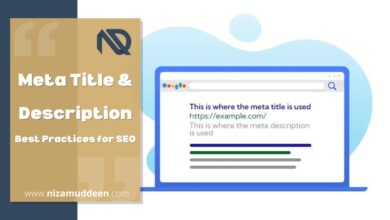Welcome to the online world, where being seen is crucial for success. Imagine Directory and Citation Listings as your helpful guides.
They’re like digital signposts leading people to discover your business and ensuring it’s trustworthy.
Directories are online maps, organizing businesses based on what they offer and where they are. Being in these directories is like putting your business on the map for customers to find.
Citations, your business’s identity card, include details like Name, Address, and Phone Number—showing people and search engines that your business is reliable.
Optimizing directory listings means choosing the right online places and sharing accurate information to be easily seen. Navigating citation building is like managing your online reputation, keeping discussions consistent across platforms.
Facing challenges online, such as dealing with duplicates or ensuring consistency, is like managing confusing road signs. We’ll guide you, making your online presence clear and straightforward—think of it like keeping a stable address to stay relevant.
Your tools for success are like companions on your digital journey.
They act as a GPS for your business, making managing listings easier. Monitoring and analytics are like a map, giving insights into your journey. Automation is your personal assistant, ensuring accuracy without too much work.
In this digital landscape, directories and citations are the secrets for a strong online presence. They’re your guides for visibility and success, not just checkboxes to tick. Let’s journey together, making your online presence shine and positioning your business for success in the ever-evolving digital world!
What are Directory Listings?
Directory listings are online databases or platforms that categorize and list businesses based on specific criteria.
These directories serve as digital repositories of business information, making it easier for users to find relevant services or products in a particular category or location.
Directory listings can encompass a wide range of businesses, from local establishments to global enterprises.
They provide essential details such as business names, addresses, phone numbers, and often additional information like operating hours, reviews, and website links.
Examples of directories include:
- Yellow Pages (yellowpages.com)
- Yelp (yelp.com)
- Google My Business (google.com/business)
Types of Directories (General, Niche-specific, Local)
Directories come in various types, each serving a distinct purpose in the digital landscape.
Understanding the different types helps businesses strategize their presence in directories that align with their industry, target audience, and geographic location.
General Directories:
These cover a wide range of industries and locations, catering to a broad audience. Examples include Yellow Pages and Yelp.
Niche-specific Directories:
Focused on specific industries or interests, these directories can provide targeted exposure. For instance, there are directories exclusively for healthcare professionals or restaurants.
Local Directories:
Emphasizing businesses within a specific geographic area, local directories play a crucial role in local SEO. Google My Business is a prominent example.
Benefits of Being Listed in Directories
Being listed in directories goes beyond just having an online presence. It offers numerous advantages for businesses aiming to enhance their visibility, credibility, and accessibility in the digital realm.
Increased Visibility:
Directory listings make businesses more visible to potential customers searching for specific products or services.
Credibility and Trust:
Being featured in reputable directories adds a layer of trust and credibility to a business, as users often perceive listed businesses as more established and legitimate.
Local SEO Boost:
For local businesses, directory listings, especially in local directories, contribute significantly to improving their local search engine rankings.
By comprehending the nature of directory listings, the types available, and the benefits they offer, businesses can formulate effective strategies for utilizing these platforms to enhance their online presence and reach their target audience more efficiently.
Citation Listings in Local SEO
Citations in local SEO refer to online mentions of a business’s name, address, and phone number (NAP).
These citations play a crucial role in establishing a business’s online presence and credibility, contributing significantly to local search rankings.
Citations are not just limited to business directories but can be found in various online platforms, including websites, social media, and local business listings.
Search engines use these citations to verify the legitimacy and relevance of a business to a particular location.
Importance of Consistent NAP (Name, Address, Phone Number)
Consistency in NAP information across online platforms is fundamental for local SEO success.
Inaccurate or inconsistent information can lead to confusion among search engines and potential customers, affecting a business’s local search rankings.
Search engines rely on consistent information to establish trust in a business’s legitimacy and relevance to a specific location.
Inconsistent NAP details can lead to a negative impact on local SEO efforts, making it essential for businesses to regularly audit and update their citation listings.
Popular Citation Sources
Identifying and leveraging popular citation sources is a key aspect of effective local SEO. These sources can significantly influence a business’s online visibility and local search ranking.
Popular citation sources vary by industry and location, but some common platforms include Google My Business, Yelp, Bing Places, and industry-specific directories.
Utilizing these platforms ensures that a business is listed in places where potential customers are actively searching, enhancing its local SEO presence.
By diving into these details, businesses can gain a better understanding of the significance of citation listings and how maintaining consistent NAP information across various platforms contributes to a robust local SEO strategy.
How to Optimize Directory Listings?
Having a strong online presence is crucial for businesses of all sizes.
One effective way to enhance your visibility and credibility is by optimizing your directory listings.
These listings, often referred to as local citations, play a pivotal role in local search engine optimization (SEO), influencing your business’s discoverability in online searches.
Choosing Relevant Directories
Selecting the right directories is a critical step in optimizing your online presence. Not all directories are created equal, and focusing on those most relevant to your industry and location ensures a more targeted and effective approach.
Industry Relevance:
Identify directories that cater specifically to your industry or niche to connect with a more targeted audience.
Local Focus:
Prioritize directories that have a strong local presence, especially if your business operates in a specific geographic area.
Authority and Reputation:
Opt for well-established and reputable directories, as being listed in these adds credibility to your business.
Completing and Updating Business Information
The accuracy and completeness of your business information in directories are pivotal for customer trust and search engine rankings.
Incomplete or outdated information can lead to missed opportunities and negatively impact your online reputation.
NAP Consistency:
Ensure consistent Name, Address, and Phone Number (NAP) details across all directories to avoid confusion and enhance search engine trust.
Additional Details:
Provide comprehensive business information, including operating hours, website links, and relevant details that help customers make informed decisions.
Regular Audits:
Regularly review and update your information to reflect any changes in your business, preventing outdated or incorrect details.
Optimizing Directory Descriptions and Categories
Beyond basic information, optimizing directory descriptions and categories allows you to showcase your business effectively. It influences how potential customers perceive your offerings and helps search engines understand your business better.
Engaging Descriptions:
Craft compelling and concise business descriptions that highlight your unique selling propositions and encourage user engagement.
Keyword Optimization:
Incorporate relevant keywords in your descriptions and categories to improve visibility in search results.
Accurate Categorization:
Choose the most relevant categories for your business, making it easier for users to find you and for search engines to understand your business context.
By strategically choosing directories, maintaining accurate business information, and optimizing descriptions and categories, businesses can maximize the impact of their directory listings, improving online visibility, credibility, and ultimately driving more traffic and conversions.
Navigating Citation Building
If you want your business to shine online, think of citation building as laying a solid groundwork. It’s all about putting your business info in the right places online to make sure people can find and trust you.
Identifying Key Citation Sources
Identifying key citation sources is a pivotal step in building a robust local SEO strategy. These sources are platforms where your business information is listed, and search engines rely on them to establish the credibility and relevance of your business in a particular location.
Industry-specific Platforms:
Identify platforms that are prominent within your industry, as these can have a significant impact on your targeted audience.
Local Directories:
Focus on directories specific to your geographical location to strengthen your local presence.
Google My Business and Major Search Engines:
Prioritize platforms like Google My Business, Bing Places, and other major search engines, as these are primary sources for local business information.
Ensuring Consistency Across Platforms
Consistency is key in citation building. Ensuring that your business information is consistent across all platforms helps build trust with both users and search engines, reinforcing your business’s legitimacy and relevance.
NAP Consistency:
Maintain uniformity in your Name, Address, and Phone Number (NAP) across all citation sources to avoid confusion and strengthen your online identity.
Business Details:
Check and verify additional business details, such as website URLs and operating hours, to present a cohesive and accurate representation of your business.
Regular Audits:
Conduct regular audits to catch any discrepancies and promptly address them, ensuring ongoing consistency.
Managing and Updating Citations
The process of citation building doesn’t end once your business is listed. Continuous management and updates are essential to adapt to changes in your business information and to meet the evolving standards of search engine algorithms.
Timely Updates:
Keep your citation information up-to-date, reflecting any changes in your business, such as address modifications or new contact numbers.
Response to Reviews:
Engage with customer reviews on citation platforms, as this not only demonstrates responsiveness but also contributes to your online reputation.
Utilize Citation Management Tools:
Explore tools that streamline the citation management process, making it easier to monitor and update your business information across multiple platforms.
By identifying key citation sources, ensuring consistency, and actively managing and updating your citations, businesses can strengthen their local SEO foundation, improve online visibility, and foster trust among potential customers and search engines alike.
Common Challenges in Directory and Citation Management
Duplicate Listings
Duplicate listings can arise when the same business information appears on a platform more than once. Managing and resolving duplicate listings is crucial for maintaining a clean online presence and avoiding confusion among customers and search engines.
Causes of Duplicates:
Explore common causes such as data input errors, changes in business information, or platform inaccuracies that may lead to duplicate listings.
Negative Impact:
Duplicate listings can dilute the accuracy and consistency of your business information, potentially affecting your local search engine rankings and user trust.
Resolution Strategies:
Implement effective strategies to consolidate or remove duplicate listings, ensuring that only accurate and up-to-date information is presented.
Inconsistent NAP Information
Inconsistency in Name, Address, and Phone Number (NAP) details across various platforms can undermine the trustworthiness of your business information. Addressing this challenge is essential for maintaining a strong local SEO foundation.
Impact on SEO:
Search engines rely on consistent NAP information to validate the legitimacy and relevance of a business. Inconsistencies can lead to confusion and potential penalties in local search rankings.
Root Causes:
Identify common reasons for NAP inconsistencies, such as outdated information, data entry errors, or inconsistent updates across platforms.
Corrective Measures:
Develop a systematic approach to ensure NAP consistency, including regular audits, updates, and coordination across different online platforms.
Dealing with Outdated or Inaccurate Listings
Outdated or inaccurate business information in directories and citations can harm your online reputation and hinder your local SEO efforts.
Proactively managing and rectifying such listings is crucial for maintaining a positive digital presence.
Negative Implications:
Outdated or inaccurate information can mislead customers, leading to frustration and potential loss of business. It also signals to search engines that your business may not be actively managed.
Monitoring Systems:
Implement systems for regularly monitoring your listings, identifying outdated or inaccurate information promptly.
Prompt Updates:
Establish a protocol for quickly updating your business information across directories whenever there are changes, ensuring accuracy and reliability.
Addressing challenges related to duplicate listings, inconsistent NAP information, and outdated or inaccurate listings requires a proactive and systematic approach. By doing so, businesses can maintain a trustworthy online presence, bolster their local SEO efforts, and enhance the overall customer experience.
Tools and Resources for Directory and Citation Management
Online Tools for Listing Management
Managing directory listings efficiently requires the use of specialized online tools. These tools streamline the process, helping businesses stay organized, monitor their online presence, and ensure accurate information across various platforms.
Listing Distribution Tools:
Explore tools that facilitate the distribution of business information across multiple directories simultaneously, saving time and reducing manual effort.
Data Accuracy Checks:
Utilize tools that verify the accuracy of your business information, ensuring consistency and helping you identify and correct any discrepancies.
Bulk Management Features:
Look for tools that offer bulk management capabilities, allowing businesses to update information across numerous listings in one go.
Monitoring and Analytics for Local SEO
Monitoring and analytics play a crucial role in understanding the impact of your directory and citation management efforts.
Businesses can gain insights into their online performance and make informed decisions by utilizing monitoring tools and analytics platforms.
Local SEO Analytics Platforms:
Explore tools that specifically focus on local SEO analytics, providing data on search rankings, user engagement, and the performance of individual listings.
User Interaction Metrics:
Monitor user interactions such as clicks, views, and reviews to gauge the effectiveness of your local SEO strategy and identify areas for improvement.
Competitor Analysis:
Utilize analytics to compare your performance with competitors, identifying opportunities to enhance your online visibility and outperform competitors in local search results.
Automation in Citation Management
Automation can significantly enhance the efficiency of citation management.
Automated tools simplify repetitive tasks, reduce manual errors, and ensure that your business information stays consistently updated across various directories.
Scheduled Updates:
Use automation to schedule regular updates for your business information, ensuring that it stays accurate without requiring constant manual intervention.
Real-time Alerts:
Implement automated systems that provide real-time alerts for changes in your online presence, enabling quick responses to any discrepancies or issues.
Citation Monitoring Tools:
Explore tools that automate the process of monitoring your citations, alerting you to potential problems and helping you maintain a clean and consistent online presence.
Businesses can optimize their efforts, save time, and ensure the accuracy and effectiveness of their directory and citation strategies. All by incorporating online tools for listing management, leveraging monitoring and analytics for local SEO, and implementing automation in citation management.
Summary of the Topic
- Key Insights: In our exploration of Directory and Citation Listings, we’ve discovered their pivotal role in Local SEO. Directory Listings act as digital hubs organizing businesses, while Citation Listings boost credibility through essential NAP information.
- Strategic Optimization: The optimization process involved making smart choices in picking directories, ensuring accurate information, and creating engaging descriptions with relevant keywords. This step highlighted the critical link between strategic optimization and increased online visibility.
- Overcoming Citation Challenges: We tackled citation management challenges head-on, from handling duplicates to maintaining NAP consistency and dealing with outdated information. Businesses learned to turn these challenges into opportunities, reinforcing their online presence.
- Tools and Resources: The importance of tools and resources in efficient management emerged as a central theme. Online tools streamlined listing management, monitoring and analytics provided valuable insights, and automation became a powerful ally in maintaining accurate and up-to-date citations.
- Strategic Significance: Throughout, we emphasized the strategic importance of effective Directory and Citation Listings. These strategies go beyond mere checkboxes; they form the foundation of a successful Local SEO approach, empowering businesses to amplify their online presence and build trust.
- Continuous Evolution: As we wrap up, it’s crucial to recognize that technology and consumer behavior continually evolve. Yet, the enduring relevance of Directory and Citation Listings remains steadfast. Businesses mastering these fundamentals not only stay relevant but thrive in the dynamic and competitive digital ecosystem.
In the ever-shifting digital landscape, businesses armed with a comprehensive understanding of Directory and Citation Listings are not just adapting—they are positioning themselves for sustained success.



